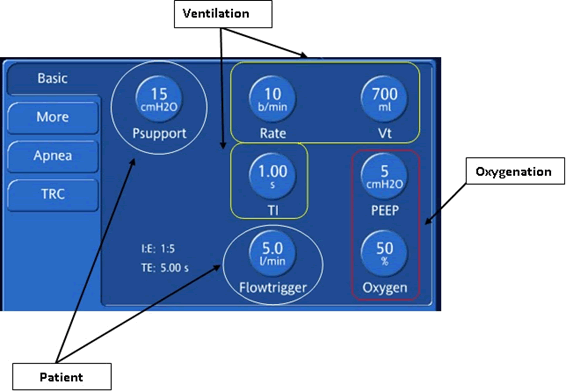Letter to Editor - (2022) Volume 8, Issue 2
The Structured Education Approach in Mechanical Ventilation: Letter to the Editor
Department of Nursing and Trauma Research Center, Baqiyatallah University of Medical Sciences, Iran
*Correspondence:
Yaser Saeid, Department of Nursing and Trauma Research Center, Baqiyatallah University of Medical Sciences,
Iran,
Tel: +989131978416,
Email:
Received: 26-Jan-2022, Manuscript No. IPJICC-22-12663;
Editor assigned: 28-Jan-2022, Pre QC No. IPJICC-22-12663;
Reviewed: 11-Feb-2022, QC No. IPJICC-22-12663;
Revised: 16-Feb-2022, Manuscript No. IPJICC-22-12663;
Published:
23-Feb-2022, DOI: 10.35248/ipjicc-8.2.66
Letter to the Editor
Dear Editor, Proper setting of the ventilator is one of the most
important and basic skills in the intensive care unit. Lack of familiarity
staff and unprincipled setting can have harmful complications
and consequences in the patient’s recovery process.
Impaired ventilation, oxygenation, and ventilator induced lung
injury are among these complications [1]. On the other hand,
the important goals of mechanical ventilation based on avoiding
over assist, under assist and patient/ventilator synchrony
also depend on performing basic settings [2].
Currently, different methods and approaches are used to train
employees in the discussion of mechanical ventilation. Despite
the variety of teaching methods, there are still learning
challenges in this regard about how to set the appropriate parameters
and changes. It seems that due to the practicality of
ventilator learning, more connection should be made between
theoretical and practical knowledge in this regard. The multiplicity
and dispersion of regulatory parameters is also a factor
for inadequate learning and instability of learning. Therefore, based on mechanical ventilation indications include: failure to
ventilation and failure to oxygenation, The VOPs approach is
proposed as a structured method [3]. Accordingly, the operator
knows the need to make adjustments in the three dimensions
of ventilation, oxygenation and the patient. V means Ventilation
refers to the volume of air that enters and leaves the lungs
frequently and in specific proportions. Regulatory parameters
in this dimension include tidal volume, respiratory rate and inspiratory
ratio expiratory. O means Oxygenation; refers to the
setting of parameters that help improve oxygenation, such as:
Fio2 and PEEP. Finally, P means Patient, which refers to the
setting of parameters that improve patient coordination and
support, such as: Trigger and Pressure Support (Figure 1). The
application of these parameters is when the patient is relatively
conscious and breathing spontaneously. They can be used
to determine the amount of support needed and to establish
proper synchrony between the patient and the ventilator. S is
also the abbreviation for the last name of the proposer, Saeid.
In general;

Figure 1: Practicality of ventilator learning.
V (Ventilation): TV or PC, RR, I; E
O (Oxygenation): Fio2, PEEP
P (Patient): Trigger, PS
Based on this approach, the operator knows what parameters
to set with what purpose and in case of change in the
patient’s condition, the parameters should be manipulated in
accordance with the principles. This approach will help to better
understand the detail concepts, their application and even
general concepts such as mechanical ventilation modes. In mechanical
ventilation, mode determines the patient contribution
in the ventilation process. Based on the P-related parameters
in the VOPs approach in fashion, one can judge the nature of
its performance. In proportion to the absence or adjustment
of these parameters, it will indicate that the mode is mandatory
and the patient is passive. This approach will create better
stability in learning and recalling content by creating a clear,
purposeful and practical classification.
Acknowledgement
None.
Conflict of Interest
The author has nothing to disclose and also state no conflict of
interest in the submission of this manuscript.
REFERENCES
- Holt GA, Habib SA, Shelledy DC. Principles of Mechanical Ventilation. Mechanical Ventilation. 2019:95.
[GoogleScholar]
- Schreiber A, Bertoni M, Goligher EC (2018) Avoiding respiratory and peripheral muscle injury during mechanical ventilation: diaphragm-protective ventilation and early mobilization. Critical care clinics. 34(3):357-81.
[CrossRef] [GoogleScholar] [PubMed]
- Carpio ALM, Mora JI. Ventilator management. StatPearls [Internet]. 2020.
[Pubmed]
Citation: Yaser S (2022) The Structured Education Approach in Mechanical Ventilation: Letter to the Editor. J Intensive Crit Care.
8(2):66.
Copyright: © Yaser S. This is an open-access article distributed under the terms of the Creative Commons Attribution License, which permits unrestricted use, distribution, and reproduction in any medium, provided the original author and source are credited


